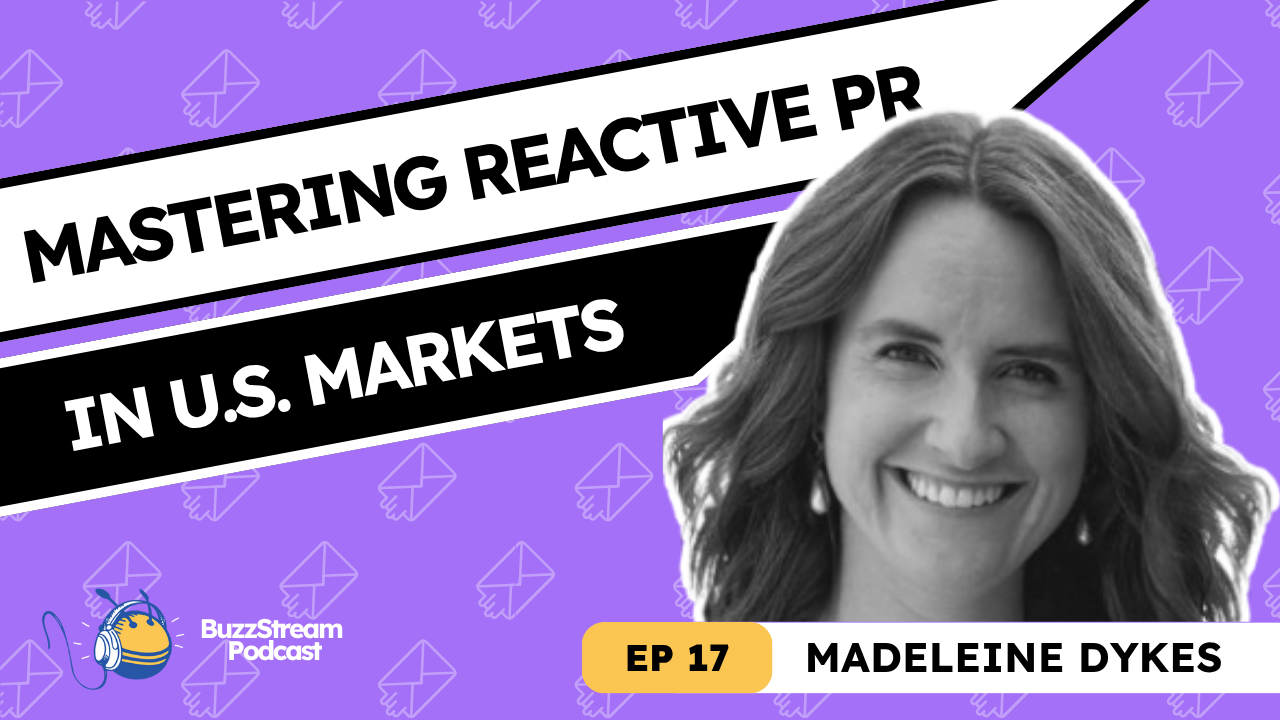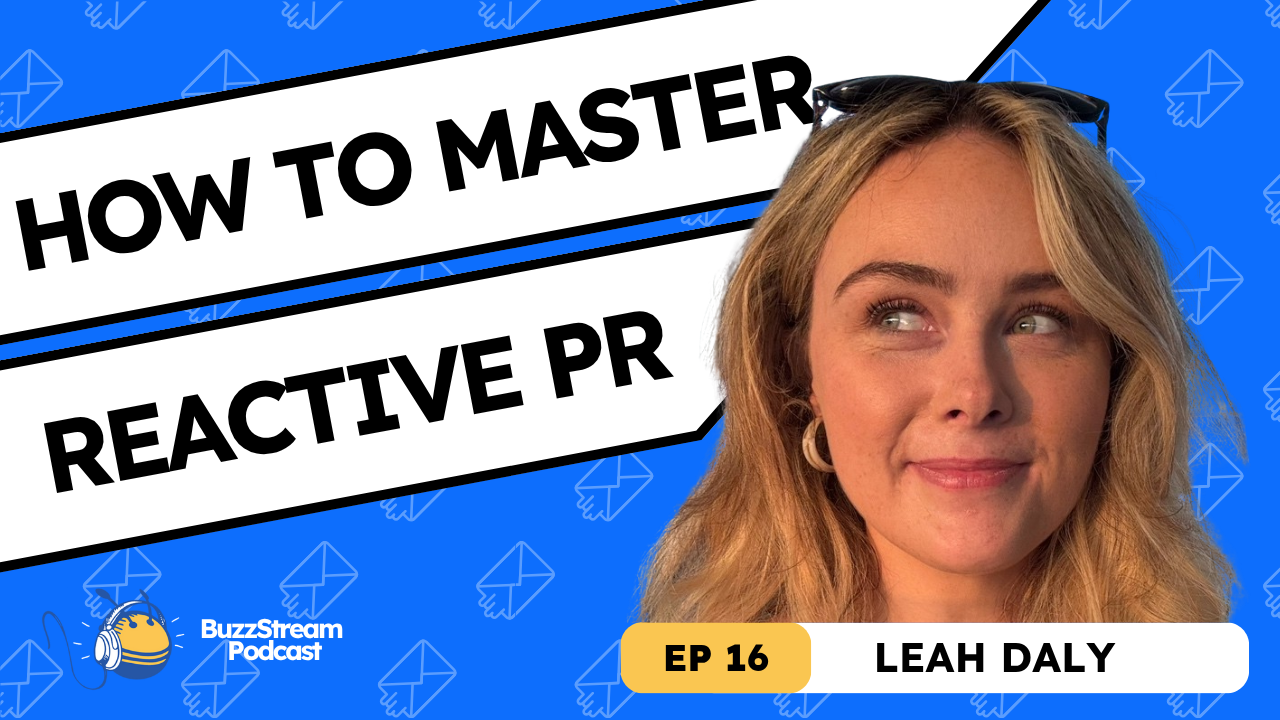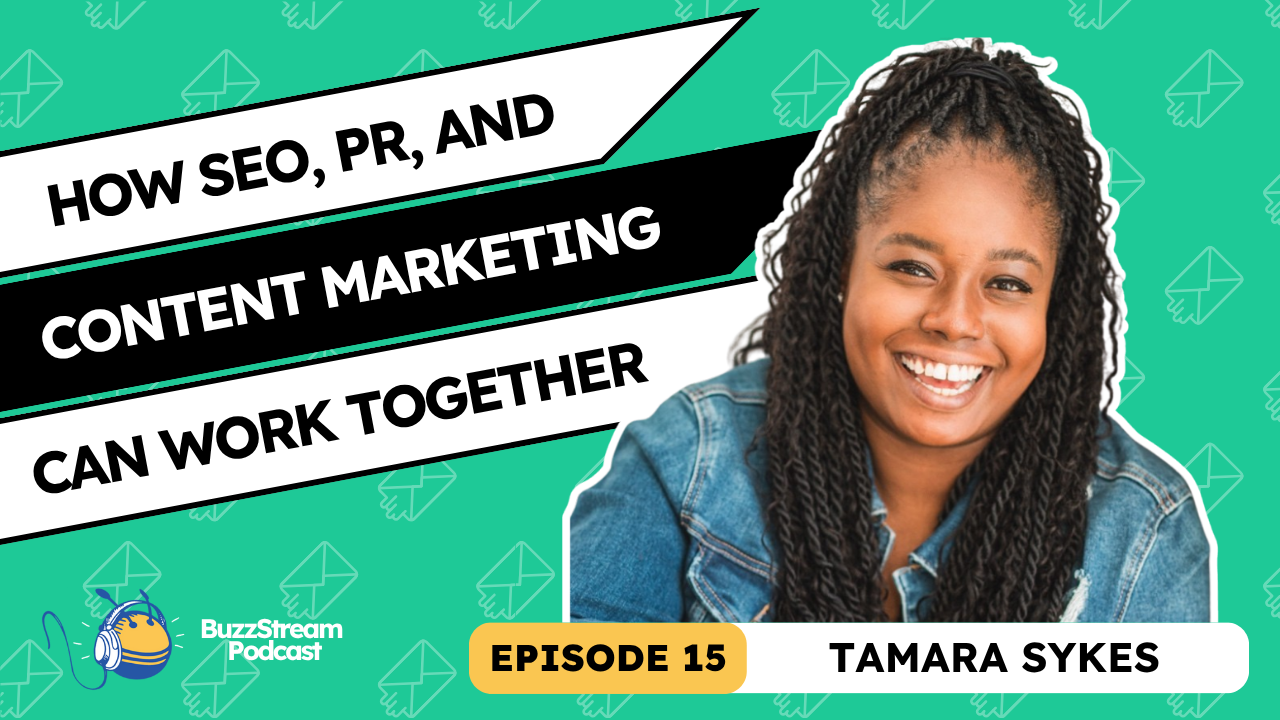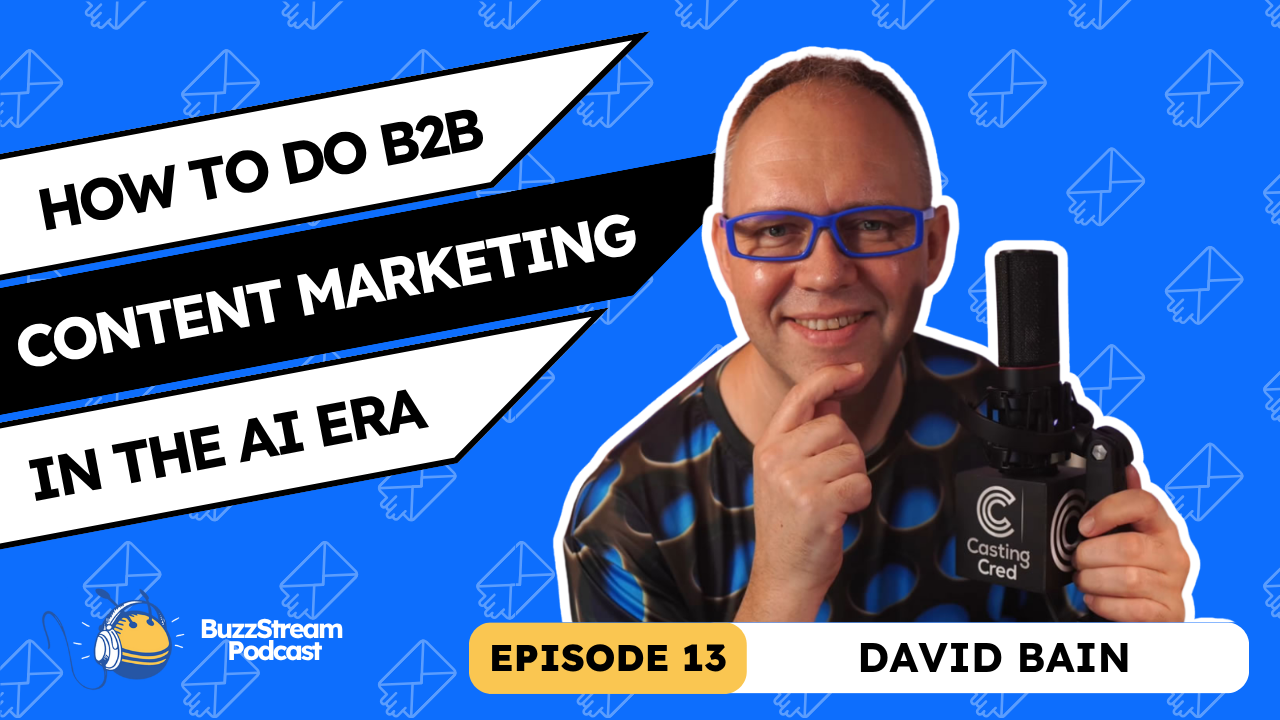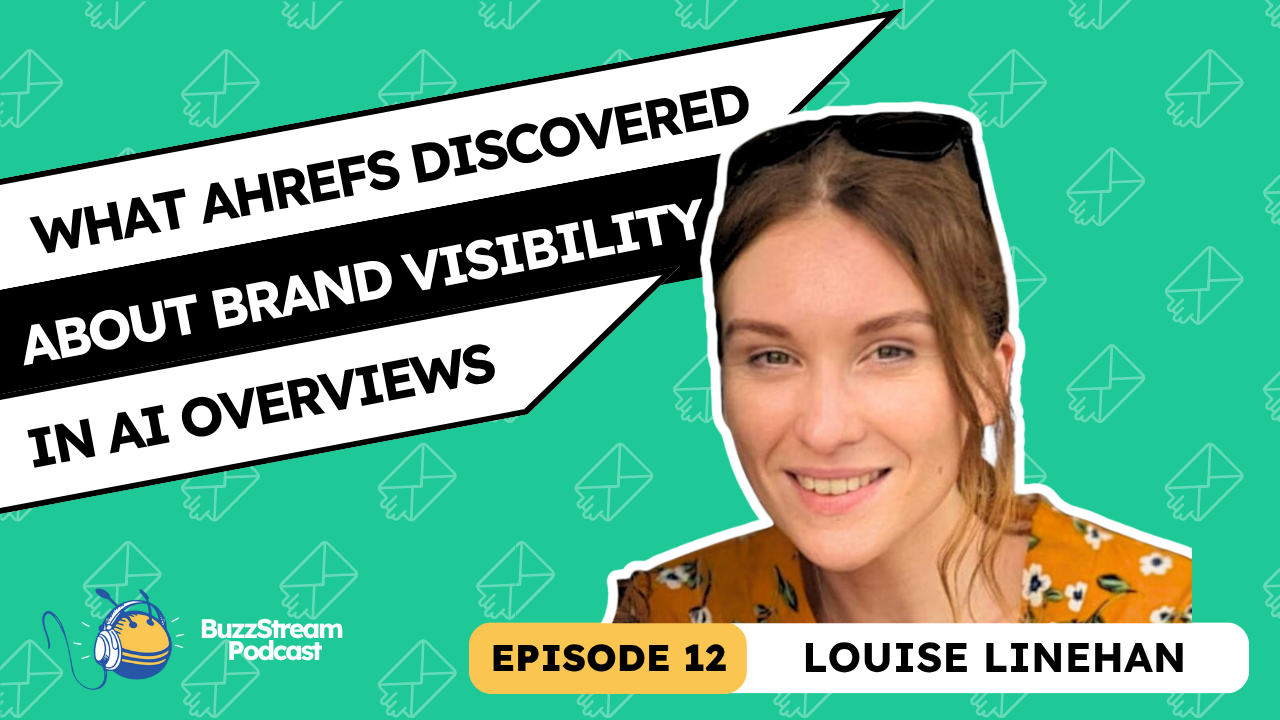Table of Contents
When I think about the people shaping the future of PR and marketing, Gini Dietrich is always at the top of the list.
She’s the founder of Spin Sucks, creator of the PESO Model, and one of the most consistent voices advocating for an integrated, outcome-driven communication strategy within marketing.
And yet, I’ve noticed a gap that still exists across marketing teams today.
So when I shared our State of Digital PR report with her and saw how fired up she got about the lack of collaboration between PR and the rest of the marketing org… I knew we had to record that conversation.
- The PESO Model only works when paid, earned, shared, and owned media are integrated, not siloed.
- Most marketers stop at publishing content without a distribution strategy, which is why it fails.
- Collaboration across PR, SEO, and brand teams is still rare, holding everyone back.
- Traditional PR sometimes avoids tying efforts to revenue, which weakens its influence in the business.
- Paid media gets the credit because it’s easiest to measure, but doesn’t build long-term brand equity.
- Multi-touch attribution is essential to show how PR contributes across the entire customer journey.
- Building brand authority takes time and coordination, but it pays off in sustained visibility and trust.
- PR is becoming more essential as Google prioritizes experience, expertise, authority, and trust.

What is Spin Sucks?
Gini Dietrich: Sure. So Spin Sucks is it started as a blog.
We were in this weird season, I would say, where. Social media was becoming a thing and executives were like, I think this social media thing is just for the kids and we don’t really need to worry about it for our business. So you had that going on. You had this whole idea of owning your narrative and controlling your brand story and doing that through content and through blogging.
There was an opportunity to start to look at. Amplifying your message through paid social and certainly through Google ads and things like that. And so there’s, it was this weird season where we were just trying to figure out like what was going on. We’re going through that right now too, in a similar way with artificial intelligence, right?
We’re all just trying to figure out what’s going on. Yeah. And how we’re gonna apply it to our jobs and how do we use it and how does it make us more effective, and is it going to replace us? But this was probably 2010, 2000, yeah. Probably 2010, 2011. When all these changes were coming, and so internally we were like if we are going to.
Tell clients that they should own their narrative and tell their brand story through blogging, then we should probably figure it out ourselves. And so we launched a blog, and at the time it was called The Fight Against Destructive Spin, but Spin Sucks was the URL Spin sucks.com. And eventually as it, it as it gained PO popularity and not notoriety and all those kinds of things, we e eventually did away with the fight against Destructive spin and just went with SPIN sucks, but.
Today, it does coaching, it has online courses, it does professional development. It’s still a content machine. It’s still the media empire that we have. But that’s the genesis of where it came from.
Vince: Yeah. And you’ve been doing it for 20 odd years, right?
Gini Dietrich: The blog launched in, I think it launched in 2009, and it was.
Really bad. Really bad. Every year on our anniversary, I republish the first blog post just so that people can see. You just have to start because that’s funny.
It’s really embarrassing how bad it was. It didn’t start to gain traction till probably 2012. That’s when we started to understand link building and SEO and optimizing and long tail keywords.
That’s when we started to really understand all of those things that go into it. And that’s what helped it to gain some popularity. We made some other changes, editorial changes and things like that of as well. So I would say 13 years is how long it’s been going.
Vince: And clearly a lot has changed in that time. But one of the big things that you did during that time was this is trademarked too, right? The PESO model. It is, yep. Yeah. Can you briefly explain the PESO model for people who don’t know what it is?
Can you explain the PESO Model?
Gini Dietrich: Yeah. The Peso model is paid, earned, shared, and owned media, which in and of itself is not.
Copyrightable or interesting. It’s in the framework that we created to accompany it. So one of the, we hear lots and lots. All the time. The people love the PACE model and they love the graphic and they love to show executives that these are the things that we can do from both a PR and marketing perspective.
And when you throw the graphic up on a screen, you can visibly see A CEO go, oh, like they finally get it right? But one of the biggest challenges is that people just pull tactics from each media type. So they might do some social media advertising and they have news releases and they do some social media, and then they do some blogging and they call it the PESO model.
And that is not the PESO model; that is not the copyrighted framework that we have.
The real value comes from what you were saying in your intro when you integrate it, start to work together, and use the media types to amplify the others so that you can measure it to the things that matter to the business.
Vince: Yeah, expanding on that a little bit, in one of your recent newsletters, you talked about how what did you say? “Marketers are stuck in channel first marketing.” It’s this mindset where, I am a social media manager and that’s all I’m thinking about.
And maybe I can throw something to my PR team, but for the most part it ends there. It ends at the handoff, right?
Gini Dietrich: yep.
Vince: If that even occurs.
Gini Dietrich: Fair.
Vince: So let’s dig into a bit of this, like cross-channel amplification and what that flywheel or cyclical nature kind of looks like and how it should in that post.
What does cross-channel amplification look like?
Gini Dietrich: So let’s say I’m going to use a really simple example just to demonstrate this. Of course, it’s more complicated and more sophisticated than this, but I’m just, I’ll use this just to simplify it.
You’re doing a digital the state of digital PR study survey.
Okay?
You send it out, get all the responses, collate all the data, put together a report, put it on your website behind a landing page, and hope that people who come to your website will download it and share it and all those kinds of things.
Great.
Now what?
And truthfully, that’s where people end, right?
They create something like that.
They create a white paper or an ebook or something like that, and then they don’t understand why nobody’s coming to the website to download it, right?
It’s because that’s just one piece of it.
So let’s call that your owned media, your content.
Now you have to use email and social and media, earned media, your media relations, and you have to amplify it through paid media.
You have to do all of those things to help.
So if you have an email list, you should definitely email it and don’t email it just once.
Email it multiple times, and you can set up triggers so that if somebody has downloaded it, they don’t get another email.
If somebody has not opened or clicked, you can set up these emails based on their actions.
So that’s number one.
And number two is to give it extra legs and ensure that you’re doing all the right things in terms of getting links to your website and building your domain authority and all those kinds of things.
You should do some media relations, so you should take pieces of your study and target them to specific journalists, influencers, podcasters, and newsletter authors and say, “Hey, we think this piece of this study would be really interesting to your audience, and here’s why.”
Now, they’re going to produce content of their own on it and link back to the study on your website.
So now you’re driving people back to the website and doing everything you need to do from an SEO perspective.
You want to make sure you have a landing page for your study.
So now let’s put some money behind it and let’s put do some Google ads and let’s do some Facebook and Instagram and LinkedIn ads and give it an extra boost to amplify it and get it to new audiences.
And then of course you’re gonna share it.
So take pieces of your study.
Create infographics, create YouTube shorts, do things that are going to amplify it to the people who already know who you are, and then let them share it with their audiences too.
So now, instead of just having it on your website as one downloadable piece of content, you’ve used the other media types to help amplify it and get it out there to current and new audiences.
Vince: Yeah. In essence, it sounds like not to boil down all that goes into this, but just like having a distribution strategy seems to be what most people are missing. .
Gini Dietrich: Yeah. And you said this too, you create something and maybe hand it off, right? But that doesn’t happen.
It happens in every-sized organization.
We work with gigantic companies.
It happens there, and it happens in my, in organizations that my friends run that are tiny.
It just, it, people just don’t.
And that’s where the real value of the PESO model comes in if you’re using the framework appropriately.
Is in actually breaking down those silos and talking to one another and Vince saying to Gini, Hey, we just produced this great study.
Can you do your work to get it out there?
Yes, absolutely.
Vince: Yeah. It’s funny because this idea of like collaboration I’ve noticed this on Reddit sometimes. I wanted to do a post that was like what do prs wish they knew about SEO? And the responses I got were like, “if you think PR has anything to do with SEO, oh geez, you’re in the long place.”
Gini Dietrich: They were waiting to say that!
Vince: It’s like there is. And I even feel this, when you talk about this digital pr thing versus kind of more traditional pr, there’s still a lot of that room..
I’ve got people rolling their eyes at my study when I shared on the public relations Reddit thread or talk, talking with people who are more, and there’s what is digital pr?
I don’t even know why they’re calling it that, why this is ridiculous.
So there’s a little bit of this.
I at least feel this is kind of ingrained.
This is our lane.
You stay in your lane, let the higher-ups worry about how these should cross over.
But let’s take digital and traditional press ’cause I know you have more of a PR background. Why do you think there is such a divide between the two?
Why is there such a divide between traditional and digital PR teams?
Gini Dietrich: Number one, it’s human nature. Human nature is. to protect what’s ours.
We just do that as human beings and the idea of collaborating and bringing each other along is really foreign to most human beings, and it’s really foreign to Americans. ’cause we just, that’s not how our society works.
When you add on top of it, the chaos of what’s going on in the world, what’s going on in our country.
And all the changes that artificial intelligence is bringing now, it makes us even more okay, I’m gonna hold onto my fiefdom because I’m actually worried I’m gonna lose my job.
And when I’m worried I’m gonna lose my job, I’m not gonna share because then I become in my mind, I become indispensable.
Of course, nobody is indispensable, but that’s how human beings think, right?
It’s a mindset shift.
And I think the other challenge is that one of the things that I hear a lot from what I’ll call the more traditional communicator is that we’re focused on brand awareness.
We don’t focus on revenue, we don’t focus on results.
And it’s such an old mindset because that’s why they don’t have a seat at the table, that’s why they’re not getting promoted, and that’s why their advice is not being taken because they’re thinking about it from the perspective of 1980 instead of 2025.
Vince: Yeah. It is weird.
The pendulum is swinging a little bit towards something that you’ve talked about a lot: PR is the future of marketing in that you have to get your brand out there. Too many companies and brands focus on one specific strategy, and they miss out on brand recognition.
So on the one hand that is branding, that is such a good piece of the puzzle.
But I think the good branding teams do it in a way that you’re saying.
Even if you’re all about brand awareness, at the end of the day, you have to report to the CFO and the CEO.
The bottom line is what’s going to matter, whether or not you’re an agency working for someone, a consultant, or an in-house marketer. If you’re not making money, you’re not going to hold on to your job.
So, it makes sense that you should be thinking.
How can we maximize everything we do by working across platforms, but it just doesn’t seem like it’s happening?
So I guess the question in there, is like, why is there, why do you think that there’s a divide between that kind of like bottom line and all of the marketing efforts.
Why is there such a divide between marketing efforts and the bottom line?
Gini Dietrich: We were just having a similar conversation yesterday, internally here.
One of the things that we see our clients do pretty consistently, and we’re trying to change this, is that they go to paid media first because it’s measurable and they can show an immediate return on investment, right?
So when a CEO says, “Hey, what are the results of what you’re doing?” They would rather say we generated X number of leads that converted into X number of sales, five leads that influenced X amount of revenue.
Versus, we did that and we’re also building the brand for the long term, but we don’t have the same kinds of results.
So it’s a harder conversation.
I think one of the things the PESO model does incredibly well when you’re implementing it correctly is it allows you to do both because you’re measuring against the things that an executive and a chief financial officer care about from a financial perspective, but also showing that as you’re doing those things, you’re also building the long-term brand that will allow you to continue to generate leads.
So like you can’t continue to generate leads just from paid media alone.
It’s a short term result.
So you have to be able to do both.
But the reason we don’t, and I’m saying collectively “we” don’t, is because the brand building is harder to measure.
Vince: Yeah. Let’s dig into that. What are some better ways people can think about building the brand?
Because obviously, this has repercussions across all the digital PR efforts. Sure, I feel like it’s the same problem that people are having.
What are some better ways people can think about building and measuring brand?
Gini Dietrich: It depends.
It depends on the organization, it depends on the goals, right?
It depends on all those things, but you really want to look at the kinds of things that you’re doing that can affect sales or donors or volunteers or whatever the goal is, right?
And in many cases, it requires you to use your left brain, which most of us are right-brain creative. So it’s hard, right?
So I always say make friends with somebody who understands data and tell them what you’re trying to achieve because they can help you.
Then, you can use that data to tell the story.
Have them pull the data you need or tell you how to pull it if you don’t have somebody internally to do it.
Then, have them explain to you what the data tells you, and then you can use your storytelling capability to demonstrate that this is what we’re doing.
Yes, we generated this number of leads and influenced this amount of revenue.
While we did that, we also did this and this, and it started to change the conversation.
One of the things I always say to our clients is, “If your executive team is asking for X, provide that and also provide Y because eventually they’re going to say to you, ‘I don’t need this stuff over here anymore.'”
Because this is vanity, feel-good metrics keep going on this path.
And when you get, have that conversation, and you will have that conversation. That’s when you know you’ve won the battle.
Vince: Yeah. I’m thinking through this as you’re talking, it’s like a lot of our customers and listeners are agencies.
Where, you’re hired to do a specific task and with, majority of them are SEOs who do link building and digital PR, as they’re gonna try to raise brand authority, which can help bring in organic traffic.
But when it comes to bottom line, some of these efforts are a few notches off from the bottom line.
So what can agencies do? Like, how have you helped agencies think through this or collaborate better with just the internal teams? What are some good connectors maybe for agencies?
How can agencies collaborate better with in-house teams?
Gini Dietrich: We always look at multi-touch attribution, so I think one of the biggest mistakes agencies generally make is last touch.
They do last touch attribution, which means what is the last thing that somebody did before they converted to whatever the goal is?
A customer revenue a license, a seat, whatever happens to be, right?
So what was the last thing they did?
Because that’s the easiest thing to measure.
Usually the last thing that they did was see an ad or something that you’ve paid for.
So then paid media gets all the credit.
That’s not true because a lot of the work that we do from a digital PR perspective is bringing them into that funnel.
And it’s sometimes it’s top, most of the time it’s top of the funnel.
Sometimes it’s middle, but all of those activities, you can’t bring somebody to conversion without all of that.
So we really focus on multi-touch and meeting people where they are in their customer journey versus the last thing that they did.
And it’s a harder thing to do for sure, and there isn’t one uniform way to do it.
But if you are raising brand authority and you are increasing links to the website and you’re showing because of that the client is showing up in generative and traditional search.
You have all of these opportunities to show that without that there, you’re not going to get the leads.
So I actually have a really good example about this.
It was probably right at the beginning of the year, so right after the holidays, a client called me and he said, “Hey I’m thinking about cutting the budget,” and I knew this conversation was coming because I’d heard rumblings about what was going on inside the business.
“I’m thinking about cutting your budget. I’m thinking about cutting Google ads entirely, and I don’t wanna do anything that’s gonna optimize for the website. So let’s just keep the website as it is. But I don’t wanna do any content. I don’t wanna do any SEO, I don’t wanna do any league building.”
I said, “oh, okay.”
It hurts us sure, because they’re cutting our budget.
But at the same time I was like, that’s so dumb.
So because it’s because we had been tracking multi-touch attribution for two years, I was able to go into the data and say, okay, this is what will happen if you do those things.
And if your goal is to compete with the big guys, which is one of their goals, but also eventually be sold, you can’t do that if you’re not showing up in search, if you’re not building your domain, and if all of your competitors are showing up in Google ads and you are not.
So I demonstrated it in terms of what their long-term goals are and he goes, “okay, nevermind.”
I mean I spent probably 15 hours building the case.
Certainly we wanted to keep the client in the budget, but it was less for that reason and more just because I wanted him to really understand that if you do this, this is the consequence.
And I think we don’t make help clients make that jump.
We don’t help them go from, we’re gonna cut our budget to, you can do that for sure, but this is the consequence of doing so.
Vince: Yeah, I heard one time, a long time ago, that somebody was explaining marketing, PR, and advertising and how they work together.
As your customers are driving down the highway, your competitors have billboards up.
You have billboards up, you want to just be in sync with them, right?
You need to just have that same yes. I guess that’s what share of voice is and some of these other me PR metrics.
But like at the end of the day, I think that’s a compelling kinda way to think about it and if you’re talking about, okay, we’re gonna pull out all of the organic, it’s like, all right, there goes 50% of your billboards or whatever.
Gini Dietrich: Yea You’re not gonna even show up in generative search at all.
That’s stupid.
Vince: So speaking of generative ai, I think that’s a great transition to our last topic and this idea of something I alluded to earlier. This idea that PR is the future of marketing.
This is something you’ve been saying a really long time.
It’s coming back, gaining steam from a couple of other people online.
But let’s talk about that.
What does this mean? Why now? Why is it a resurging, let’s start there.
Why is PR the future of marketing in the AI age?
Gini Dietrich: It’s a good question. So I think we’ve all become aware that of Google’s each right expert expertise, experience, authority and trust.
Because AI is so profound and prolific, and we can use it to make ourselves more efficient, the marketers will screw everything up like we always do.
We do. We ruin everything.
What we’re finding, and I think what the point that Google is making without actually saying it, is that you can pump out all sorts of content now.
And it takes 30 seconds to, instead of three hours, you can pump it out.
And I know you’ve seen content in all the places where you’re like, AI wrote this.
You didn’t even try, go in, and edit it.
You just copied and pasted and published and it’s terrible. You know that it’s AI, right?
So I think the point is that.
You can do that for sure, and you can have it draft an outline or a first draft, but it’s the beginning, not the end.
And really what you need to do is then go in and please edit it, and then go in and add your experience and your expertise, because that’s what’s going to make the content different, and that’s going to demonstrate who you are as a thought leader, who your business is, what your brand stands for, all those kinds of things that nobody else can demonstrate because you are the only one with those two at the experience and the expertise.
So, from a generative search perspective, the AI is crawling for your experience and expertise.
If your content doesn’t demonstrate that, it won’t show up at all. So we always say to clients, “This is great. Let’s continue to do this.” If you want AI to draft it for you, that’s fine, but we have to go in and add what makes it different for us. We have to add sub-subject matter experts.
We might want to include the customer story. We add our expertise and our experience to make it enjoyable, and that’s what will rise it to the top of the search results.
Vince: Yeah, have you seen a noticeable uptick when you do that kind of stuff for clients, like showing up in generative AI when they do that?
Gini Dietrich: fast.
Vince: Really?
Gini Dietrich: Yeah. Interesting.
Vince: Yeah,
Gini Dietrich: it happens really fast.
Vince: Yeah. This is, I think, going to be the big topic for the next couple of years. It’s whatever it takes to get into generative AI.
To put a bow, I think on all this, it seems like the what you’re saying with the PESO model and how this can tie into AI strategies is like a don’t do anything in a silo, right?
Yep. Like you should be thinking about the big picture.
Gini Dietrich: Yep.
Vince: Andthinking about how you could do something better than your competitors. In this case, competitors are also AI, right? Like you’re competing with AI.
Gini Dietrich: Yes.
Absolutely. To do better.
Vince: That is like a mindset shift for a lot of people. Some people think of it as a collaborative tool or a way to scale, your content.
But it sounds like your thought is that you can use it as a crutch, maybe, but at the end of the day, if you don’t have anything new to say, you’re not going to get noticed.
I highly recommend everybody check out Spin Sucks. You have a fabulous newsletter, podcast, and blog.
Also, get familiar with the PESO model if you’re not familiar with it. And like I said in the beginning, like subscribe, but more importantly, comment, interact with this kind of post.
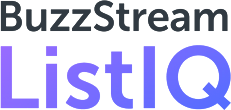
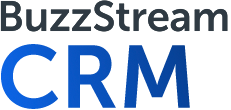 End-to-end outreach workflow
End-to-end outreach workflow


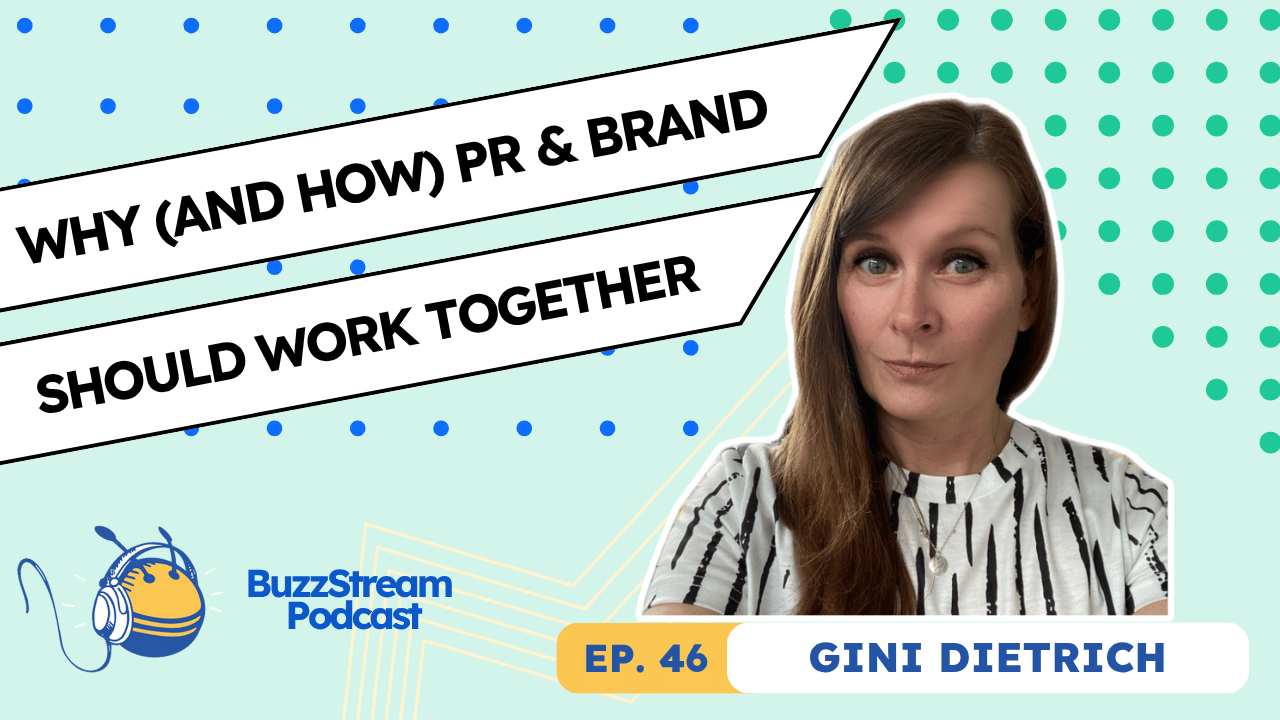
 Check out the BuzzStream Podcast
Check out the BuzzStream Podcast

